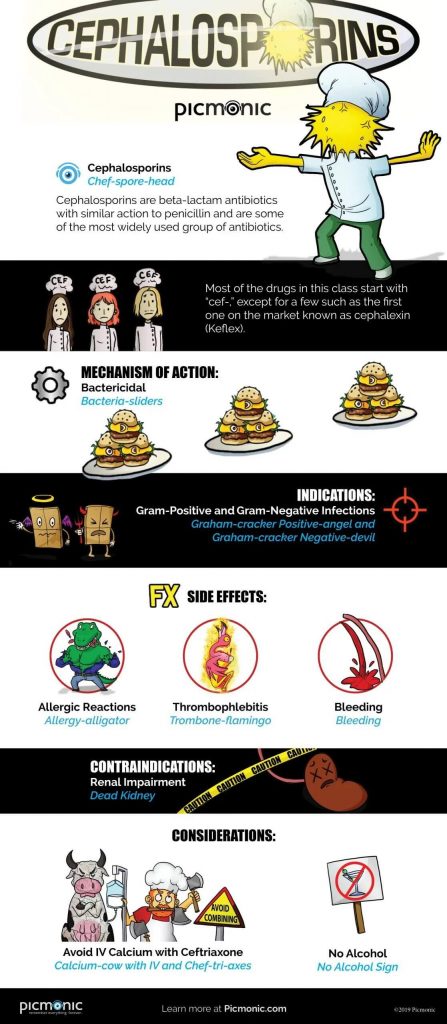Cephalosporins are beta-lactam antibiotics with similar action to penicillin and are the most widely used group of antibiotics.

Some topics you will learn in this infographic:
Starts with “Cef-”:
Most of the drugs in this class start with “cef-,” except for a few such as the first one on the market known as cephalexin (Keflex).
Bactericidal:
Unlike bacteriostatic agents, which simply stop bacteria from reproducing, bactericidal agents actually cause bacterial cell death. They disrupt cell wall synthesis leading to cell wall damage, causing lysis and death.
Allergic Reactions:
Allergic reactions are the most frequent adverse events occurring with the use of cephalosporins. The most common symptom is a maculopapular rash that develops several days after the onset of use. If signs of allergy appear such as a rash, hypotension, urticaria, or difficulty breathing, the use of cephalosporins should be discontinued.
Bleeding:
The cephalosporin, cefotetan, may cause bleeding tendencies due to reduction of prothrombin levels. Implement caution when using concurrently with anticoagulants or thrombolytic agents and monitor for signs of bleeding.
No Alcohol:
The cephalosporin cefotetan can induce a state of alcohol intolerance. The patient should be instructed to not have any form of alcohol when taking this medication as their concurrent use could cause a disulfiram-like reaction (flushing of the face, headache, nausea, vomiting, chest pain, weakness, blurred vision, mental confusion, sweating, choking, breathing difficulty, low blood pressure, and anxiety).
To learn more, get started with a free Picmonic account.













